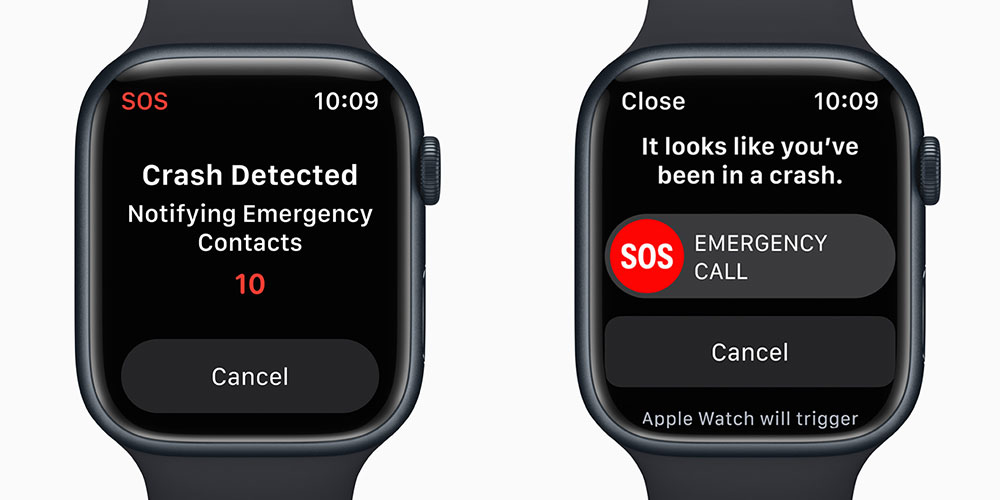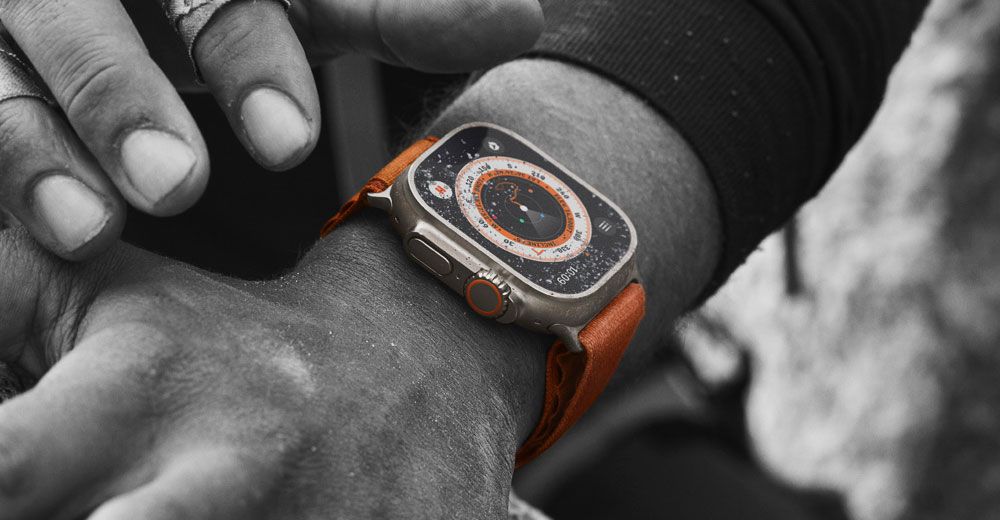At a web event on Wednesday, Apple updated its iPhone, Watch, and AirPods product lines and unveiled a new Ultra watch for activities in demanding settings.
The Apple Watch Ultra is made to function in both extremely hot and cold climates, as well as in water up to 130 feet deep. It has a robust titanium case, and the face of the watch is composed of sapphire crystal.
Additionally, Ultra contains a programmed “Action” button, an 85-decibel emergency siren, and controls that are made to be used with gloves. Three microphones allow for clear voice calls even in windy situations.
The Ultra includes built-in cellular and a battery life of 36 hours between charges, however Apple stated new battery optimization software will increase it to 60 hours by the fall.
Additionally, Ultra supports dual frequency GPS and may be used as a dive diving computer with the Dive Plus software.
The Ultra will go on sale on September 23 for $799 USD.
As a scuba diver, Tim Bajarin, president of Campbell, California-based Creative Strategies, a technology advising company, remarked, “I’ve had many dive watches that cost well over $1,000.”
He told Beingbloger, “Here you’re getting a dive watch and everything else, plus cellular, for $799.” “That’s a great offer.”
Scuba divers and fans of extreme sports would love it, he continued.
Quick Guide
Accident detection
The Ultra is a “statement product,” according to Ross Rubin, the chief analyst at New York City-based consumer technology consultancy company Reticle Research.
The incident “shows that the Apple Watch can be utilised in tough situations by those involved in severe activities.”
You can see how some of the technologies, like the action button, may leak down to future versions of other models, but it’s not something that most people require, he continued.
During its pre-recorded event, Apple also unveiled the Series 8 Apple Watch. The watch has a brand-new temperature sensor that women can use to monitor ovulation. Usually, a thermometer and notebook are used to determine ovulation. The new watch automates retroactive ovulation calculations, making that chore much simpler and more practical.
According to Mark N. Vena, president and lead analyst at Smart Tech Research in San Jose, California, “the Apple Watch has transformed into a digital-health wearable solution.”
The new iPhones and the watch both include a new crash detection capability. The watch will automatically connect with emergency services, disclose the crash’s location, and alert the emergency contacts stored on the device when a collision is detected.

Apple updated the Series 8’s three-axis gyroscope and added a high-force accelerometer in order to provide the capability. The accelerometer can gauge up to 256 Gs, enabling it to identify a crash’s most severe impacts.
Only when a user is in a moving car does the feature activate, and it only collects information just before a potential collision.
Bajarin said, “Apple Watch isn’t just for health; it’s for safety.”
Battery life for Series 8 watches is 18 hours, however it may be increased to 36 hours thanks to a new low power mode option.
On September 16, the Series 8 will be available. Priced at $399 for the GPS version and $499 for the cellular version, respectively.
SOS Satellite
Apple also unveiled the iPhone 14 Pro, with a 6.1-inch display, and the Pro Max, with a 6.7-inch display, during its online event.
The new Emergency SOS service via satellite is supported by the Pro models, as well as the 14 and 14-plus variants. The new iPhone models have unique antennae integrated into them that allow them to text messages to high-flying satellites.
Software on the phone directs the user where to position their phone to connect to the satellite and maintain connectivity even while the satellite moves to help with the connection.
Apple developed a unique short-text compression algorithm to lower the average size of a message by a factor of three due to the limited bandwidth used in satellite transmission.
The satellite service will initially only be available in the United States and Canada, where it will be provided without charge for two years.

Many people will find the satellite phone feature to be of great use, according to Vena.
He made a joke about how Tom Hanks’ phone in the movie Castaway would have been ideal for it. It would have been a brief video, though, if he had an iPhone 14.
Apple is pioneering a new path in personal safety and protection, according to Bajarin. Going forward, it will play a bigger role in their identity, he insisted.
He continued, “The satellite functions in the iPhone 14 Pro establish a new standard in cellphones.”
DSLR Competitor
The cameras in the new pro models have also been improved by Apple. The device’s 48-megapixel main camera on the back has a fast f/1.78 lens, while the front camera features a 12-megapixel sensor and an f/1.9 lens. The ProRaw format is also supported by the primary camera.
The new A16 chip is also available in the Pro variants. “With the A16, Apple has the best powerful smartphone camera on the market right now,” Bajarin stated.
The iPhone 14 Pro series is “far closer to a true DSLR thanks to the 48 megapixels and ProRaw features,” he continued.
Vena pointed out that Apple aims further than mere parity with digital SLR cameras. It is obvious that Apple wants the camera in its phone to be better than a DSLR in many aspects, rather than being an exact substitute, he said.
According to him, Apple’s upgraded front camera in the new iPhones signals yet another shift in how the company views its phone cameras. “The back camera used to be the most significant camera,” he remarked. “They now value both the front and the back cameras equally.”
With the Pro and Max versions, Apple has advanced video stabilisation significantly. Rubin observed that taking video while moving literally causes very little visual shake.
The Pro and Pro Max models now include a dynamic notification centre in the much-maligned notch on the front. They have changed it from being a drawback to being a plus, according to Rubin.
There will be five colour options for the iPhone 14 and iPhone 14 Plus: midnight, blue, starlight, purple, and (Product)Red. Space Black, Silver, Gold, and Deep Purple will be the four colour options for the iPhone 14 Pro and iPhone 14 Pro Max.
The Pro 14 will cost $999, while the Pro Max will cost $1,099. The price of the iPhone 14 is $799; the 14-plus is $899. Sept. 16 will see the release of all.
superior AirPods
Along with the upgraded H2 processor, greater battery life, and noise cancellation technology that is twice as effective as its predecessor, Apple also unveiled an updated version of the AirPods Pro.
Additionally, it enhances the earbuds’ “transparent” mode by reducing some of the distracting sounds that would otherwise be audible while noise-cancellation is off. Rubin said, “I haven’t seen other earbuds accomplish that.” “It addresses one of transparency mode’s drawbacks. You opened the door to everyone and everything, even the loud noises.
On September 23, the new AirPods Pro will be available for $249.
Jim McGregor, founder and principal analyst at Tirias Research, a high-tech research and advisory firm in Phoenix, claimed that “the majority of these devices are just upgrades.”

The Apple Watch Ultra is the only device with a novel usage model, he continued. The iPhone 14 and iPhone 14 Plus will reportedly offer some capabilities that have been available on Android phones for three or four generations.
Also read: How the new AirPods Pro stack up against other AirPod models
It’s becoming more difficult for Apple and everyone else to defend these yearly improvements, he continued. But I will give Apple credit. I’m glad to see they’re selling these items for a fair price and not attempting to sell a $2,000 smartphone.


Recent Comments